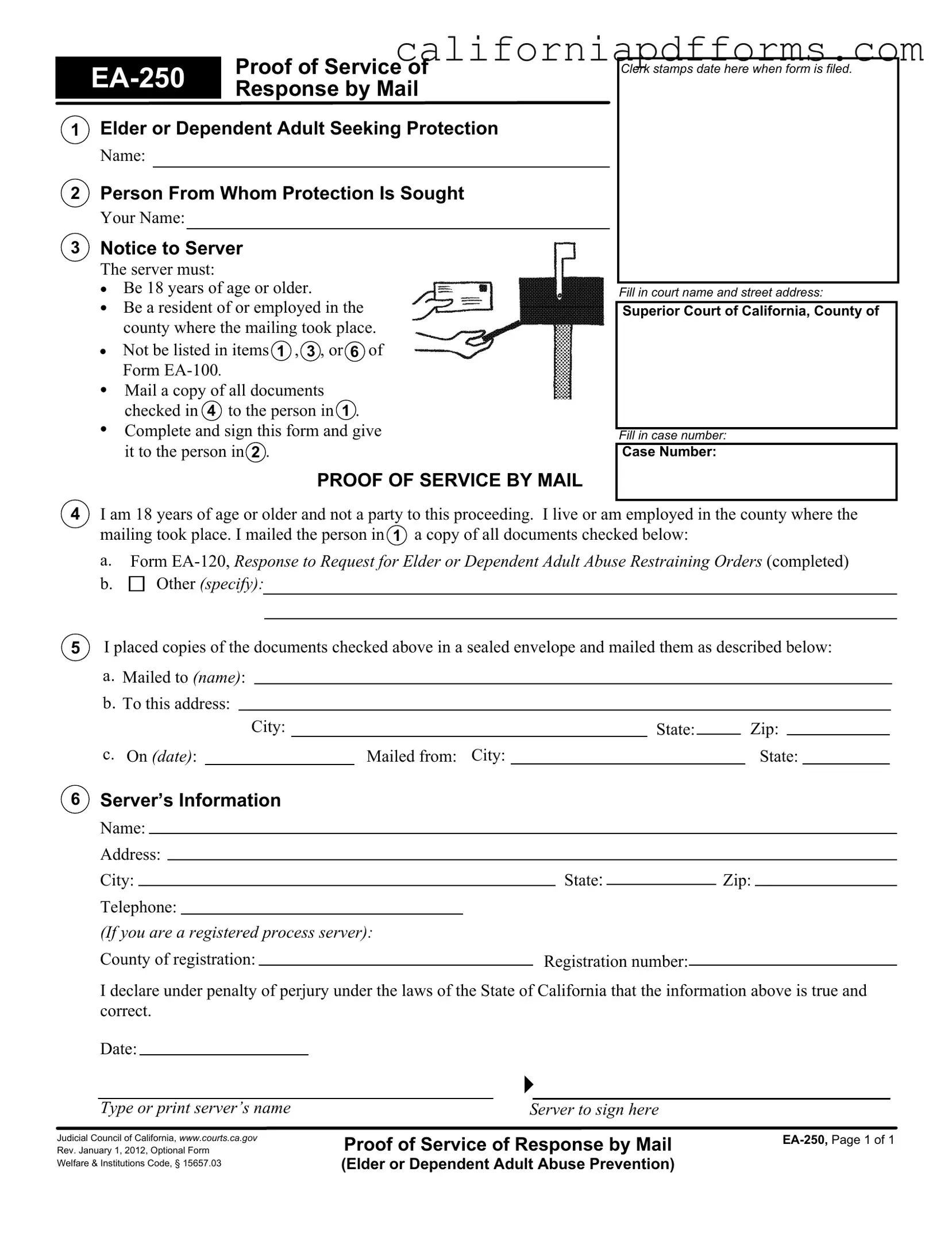Download California Ea 250 Form
The California EA 250 form is a legal document used to confirm that a response has been mailed to an elder or dependent adult seeking protection. This form ensures that all parties are informed and that the process is handled correctly. If you need to fill out the EA 250 form, click the button below to get started.
Open Your Form Online
